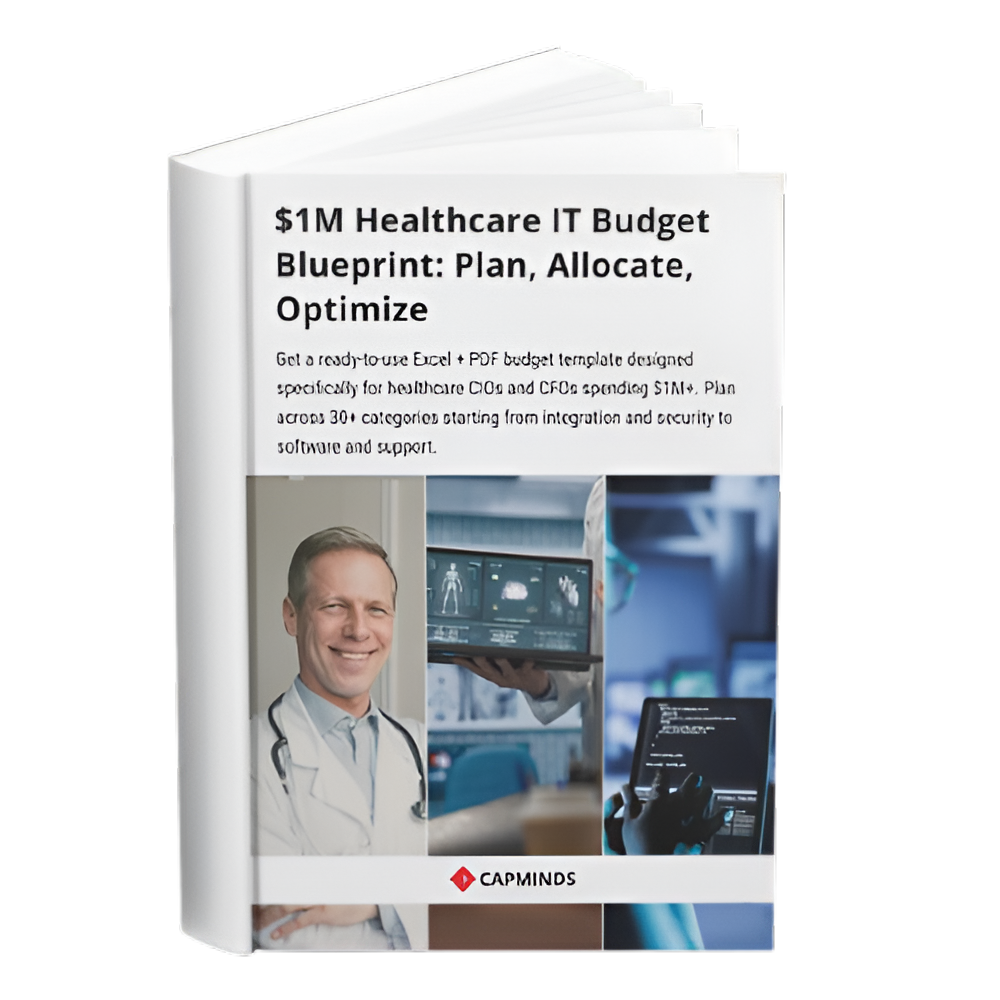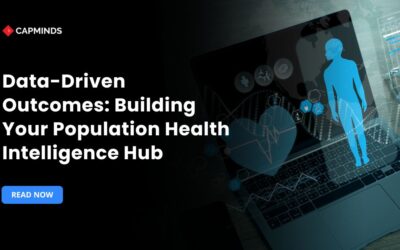How State and Regional HIEs Can Improve Population Health with Predictive Analytics
Health Information Exchanges (HIEs) in a state or region collect clinical and administrative data from hospitals, clinics, labs, payers, and public health organizations. An HIE combines many systems to provide a longitudinal patient record that is far more complete than any single provider’s view. In this way, HIEs become “cornerstones of data exchange” that can drive population health management. HIEs will really actively contribute to “standardizing health information exchange, improving data quality, and ensuring interoperability to improve the delivery of healthcare services and patient outcomes,” according to industry experts.
Providers and public health organizations can use analytics on entire populations rather than just specific care events if they have timely access to longitudinal data. Population health programs can thus transition from reactive treatment to proactive, data-driven care management thanks to state and regional HIEs.
1. Data Integration and Interoperability
Building the Data Foundation for Predictive Analytics
Central to enabling predictive analytics is the integration of data from many sources. State HIEs typically build enterprise data warehouses and master‐patient indices to link medical records, lab results, pharmacy fills, claims, and social services data under one platform. Crucially, HIEs map disparate clinical vocabularies into standard terminologies – for example, translating lab tests to LOINC codes, medications to RxNorm, and diagnoses to SNOMED – so that data from different providers can be analyzed together. As one study notes, HIEs that complete this rigorous mapping “offer an unparalleled data repository that can be leveraged to realize value through the application of advanced analytic techniques”.
Practically speaking, this means that regardless of whether the facility recorded a patient’s diagnoses, test results, imaging, and prescriptions, they can be integrated and normalized. Population health managers are therefore able to precisely count people with long-term illnesses or link risk factors (such as uncontrolled blood pressure) to community-wide results.
Interoperability Standards: HL7, FHIR & TEFCA
HIEs also adhere to industry-wide standards and frameworks to facilitate seamless exchange. Most HIE networks support HL7 messaging, FHIR APIs, and other interoperability standards so that data flows securely between electronic health records and the HIE’s platform. Many regional HIEs now participate in the federal Trusted Exchange Framework and Common Agreement (TEFCA) or state-run networks, further smoothing data sharing across state lines. In this way, a physician or analyst can query the HIE for data on a patient or population, and the HIE will normalize and return results from diverse sources.
By connecting “disparate systems and data sources,” HIEs reduce duplicate records and improve the quality of the master health. In fact, leading exchanges are investing in information governance programs precisely to “improve data integration and data management processes” as their use of analytics.
Related: Designing a Central Interoperability Hub: HL7 v2, FHIR, CCD, and Direct Messaging
Architecture for Predictive Analytics Pipelines
Architecture of a predictive analytics pipeline built on HIE data. Clinical data from multiple providers is aggregated and normalized in the HIE’s data warehouse; predictive models then score patient risk, which can be visualized on dashboards for care managers.
2. Predictive Analytics for Identifying At-Risk Populations
Machine Learning Models Built on HIE Data
With an integrated data platform in place, state/regional HIEs can support sophisticated population health analytics. Predictive models – often based on machine learning (ML) algorithms – can be trained on HIE data to flag patients at high risk for adverse outcomes. For instance, an HIE may predict which patients are most likely to be admitted to the hospital or attend the emergency room during the following six to twelve months using logistic regression, decision trees, or random forest models.
These algorithms produce a risk score after ingesting hundreds of characteristics from a patient’s HIE record, including age, comorbidities, test results, medication adherence, past utilization patterns, socioeconomic indicators, etc. Care managers can then deploy outreach or care coordination resources to patients who are most likely to be at risk by stratifying patient panels based on risk.
Evidence of High Model Accuracy
Studies show HIE‐based predictive models can achieve strong performance.
- Sensitivity and specificity: 80–90%
- Positive predictive values: 80%+
Real-world HIEs continuously score populations, enabling care teams to identify high-risk patients in near real time.
Risk Stratification for Targeted Care Management
Using these analytics, HIEs can effectively subgroup populations by risk profile. High‐risk clusters – seniors with multiple comorbidities, younger patients with severe chronic illness – can be prioritized for preventive interventions.
Physicians can leverage analytics to “improve disease management, stratify at-risk patient populations,” and align resources with patient needs.
Using Social Determinants for Better Predictions
Because HIE data is longitudinal and multi-source, predictive models can incorporate both clinical and social determinants of health—something single-provider EHRs cannot match. Analysts note that combining social and clinical data “allows providers to shape interventions and deliver proactive care tailored to specific groups”.
Integrating Predictive Scores Into Care Workflows
Clinical workflows receive results from HIE-based predictive analytics via dashboards, alarms, and case-finding tools. HIEs are able to go from data collection to practical intervention thanks to these insights.
3. Predictive Analytics for Public Health Surveillance
Real-Time Surveillance & Outbreak Detection
Beyond individual risk, HIEs can power public health surveillance and outbreak anticipation. Because HIEs aggregate data from hospitals, clinics, labs, and even EMS or public health registries, they offer a near real-time feed of population-level trends. Aggregating and de-identifying these data allows health departments to “understand and respond to real-time population health trends”.
- An HIE might, for instance, perform daily analytics to find anomalous increases in respiratory complaints or positive test findings that might point to a COVID-19 or influenza outbreak.
- Public health authorities can detect hot spots and allocate resources more rapidly by switching from manual reporting to automated analytics for surveillance.
Indeed, HIE information has been explicitly recognized as beneficial for disease monitoring and crisis response. Experts observe that the increased timeliness and comprehensiveness provided by HIE “can support public health practice,” including disease surveillance and disaster response.
- Practically speaking, health departments can receive alerts about clusters of reportable conditions or query HIE data for summary reports.
- In order to guarantee that vaccination records, lab reports, and syndromic surveillance data flow smoothly for analytics, some jurisdictions have directly linked their HIEs to public health registries.
- An HIE’s aggregated data stream can identify minor increases in symptoms or diagnoses that might otherwise be dispersed among providers in a time of emerging diseases.
Read this document – Population Health and Analytics: Leveraging Custom EHR Dashboards for Better Outcomes
Advanced Predictive Methods for Public Health
HIE-based analytics can forecast outbreaks before they completely materialize by integrating predictive techniques (time-series models, anomaly detection, geographic clustering). For example, public health can look into it early if the model finds an increasing tendency of gastrointestinal sickness in nearby counties. In a similar vein, an HIE might identify communities with low vaccination rates for focused campaigns or highlight clusters of diseases that can be prevented by vaccination.
By converting vast amounts of clinical data into useful early-warning signals, state and regional HIEs work as a force multiplier for public health surveillance.
4. Reducing Costs and Improving Value
Cost Reduction & Avoiding Redundant Care
Predictive analytics through HIEs also drives cost reduction and better resource utilization. One obvious benefit is the elimination of duplicate or unnecessary care. When patient data are shared across the community, providers can avoid redundant tests or procedures.
- For example, an emergency physician can query the HIE and see that a patient’s lab tests were drawn at another hospital that week, avoiding needless repeats.
- According to studies, using HIE can drastically cut healthcare expenses by avoiding readmissions and minimizing redundant testing.
- In general, costly hospital stays and problems can be completely avoided when care managers use HIE-driven risk scores to act early.
- Because of these efficiencies, the system focuses more on prevention, and providers spend less on unnecessary care, which helps bend the cost curve.
Supporting Value-Based Care Programs
Furthermore, modern value-based payment models (ACOs, bundled payments, Medicaid managed care) rely on comprehensive data that HIEs naturally provide. As one expert notes, the shift from fee-for-service to value-based care “places HIEs in a great position,” because these new models demand data beyond the walls of individual providers. By acting as a single point of data collection, HIEs can simplify the reporting of quality measurements (such as CMS Star ratings and HEDIS metrics).
Organizations can more effectively negotiate value-based contracts by utilizing predictive analytics; for example, recognizing low-risk groups may support a lower anticipated cost of care. In short, HIE-based analytics support better financial outcomes by aligning care management with population risk. The ROI is measurable: analysts consistently find that HIE-enabled coordination and analytics result in “significant operational and financial value” by lowering ED utilization, reducing inpatient days, and saving providers.
5. Informing Policy and Decision-Making
Using Aggregate HIE Data for Policy
Aggregated HIE data underpin smarter health policy and public health planning. Policymakers get a comprehensive picture of community health when payers and providers submit data to an HIE. Access gaps, growing needs, and inequities in disease burden can all be found using de-identified, aggregated HIE information. For instance, a state health department may decide to set aside funds for outreach if an HIE assessment reveals that some rural areas have surprisingly high rates of untreated hypertension.
In general, “deidentified aggregate health data” from HIEs allows stakeholders – including public health officials and researchers – to “better understand and respond to real-time population health trends”. Such insights inform decisions on resource allocation, new care programs, and preventive initiatives.
Collaboration With Public Health & Medicaid
State HIEs frequently work closely with Medicaid and public health organizations. For instance, several HIEs give data feeds to state cancer or immunization registries, and some allow Medicaid to monitor utilization and continuity of care. One advocacy report highlights that HIEs help “public health agencies access timely, trusted data for epidemiology, poison control, death investigations, and Medicaid program needs”.
In actuality, this implies that in order to support surveillance reports, assess policy interventions, or determine program impact, outbreak investigators, Medicaid analysts, and policy makers can perform ad hoc queries on HIE data. Thus, HIEs ensure that community health programs are data-driven and direct evidence-based policy by providing large, high-quality datasets.
6. Privacy, Security, and Governance
Privacy, Security & HIPAA Compliance
While enabling analytics, HIEs must rigorously protect patient privacy and comply with regulations. All data exchange adheres to HIPAA and relevant state privacy laws. To guarantee that only authorized users see protected health information, HIE platforms employ sophisticated security methods, such as encrypting data while it’s in transit and at rest and implementing stringent role-based access rules. To find abuse or breaches, audit trails and routine security evaluations are normal procedures.
Data-use agreements and HIE governance regulations specify how patient data can be processed. When used for research or public health, predictive models are frequently trained on limited or de-identified datasets (with patient identifiers removed or replaced). For population health analytics, HIEs usually only deliver aggregated or risk-score findings rather than raw PHI, so striking a balance between privacy and utility is crucial.
Consent, Governance & Use Policies
In addition to technical safeguards, patient consent options are incorporated. Many state HIEs offer patient opt-out mechanisms; if a patient opts out, their data are excluded from the analytics feed. Careful governance ensures compliance: for example, any analytic query or machine learning model must have a legitimate purpose aligned with treatment, payment, or healthcare operations. Overall, modern HIEs implement a layered approach – including encryption, strong authentication, and governance oversight – so that predictive analytics can proceed on high-quality data without compromising confidentiality.
7. Technical Implementation
Infrastructure & Data Engineering
On the IT side, HIEs supporting predictive analytics invest in scalable data infrastructure and analytic tools. This often involves cloud-based data lakes or warehouses and real-time data pipelines (such as HL7 feeds or FHIR streams). Advanced data engineering (ETL, feature normalization, temporal alignment) is required to ensure machine learning models receive clean, timely inputs.
Analytics & Model Operations
Many HIEs create internal platforms or collaborate with analytics suppliers to execute algorithms (such as Python or R-based pipelines) on the integrated data. The models are usually verified on past data and regularly retrained as new data becomes available, regardless of whether statistical regression or AI techniques are used.
Dashboards & Real-Time Decision Support
This setup enables “real-time surveillance” dashboards and decision-support alerts that clinicians and health leaders use daily.
CapMinds Population Health & HIE Integration Services
State and regional HIEs are reshaping population health, but true value is unlocked only when the right technology, data engineering, and analytics infrastructure are in place.
This is where CapMinds becomes your strategic implementation partner. We help healthcare organizations build, optimize, and operationalize HIE-driven predictive analytics ecosystems that accelerate outcomes, reduce costs, and strengthen public health readiness.
Our specialized services include:
- HIE Integration & Interoperability (HL7, FHIR, TEFCA)
- Data Engineering, Normalization & Master Patient Index setup
- Predictive Analytics Pipeline Development
- Cloud Data Lake / Warehouse Implementation
- Dashboards, Reporting & Real-Time Decision Support
- Privacy, Security & HIPAA-aligned Governance Automation
- Population Health Analytics & Value-Based Care Enablement
With CapMinds, your HIE infrastructure becomes faster, more reliable, and fully optimized for predictive insights that drive proactive care.
Ready to transform your population health strategy?
Let CapMinds build your next-generation analytics foundation.




